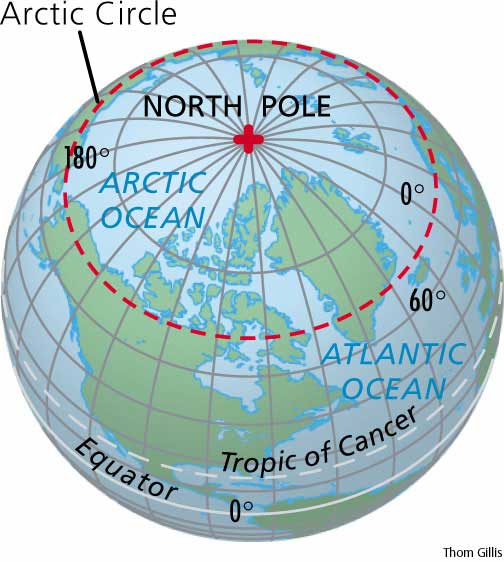Arctic Circle
LOCATED AT 66.5 degrees north latitude or 23.5 degrees southward of the North Pole, the Arctic Circle forms an imaginary line marking the northernmost location where the sun can be seen during the northern hemisphere's winter solstice (December 21). On June 22 and again on December 21, the circle of illumination (formed by the sun's rays striking the Earth) extends from the edge of the Arctic Circle in the north to the ANTARCTIC CIRCLE in the south.
On December 21, the sun is directly overhead at the TROPIC OF CAPRICORN (23.5 degrees south latitude) and the area within the Arctic Circle experiences 24 hours of darkness. On June 22, the sun is directly overhead at the TROPIC OF CANCER (23.5 degrees north latitude) and the area within the Arctic Circle experiences 24 hours of sunlight. On this day, the sun reaches its zenith (highest point) of 47 degrees above the horizon at noon and its nadir (lowest point) at midnight. Long periods of continuous sunlight during summer months have led to the area within the Arctic Circle being called “Land of the Midnight Sun.”
The name Arctic comes from the Greek arktos meaning “bear,” in reference to the position below the Great Bear constellation (Ursa Major). Located within the Arctic Circle are the ARCTIC OCEAN, the northern portion of GREENLAND, Baffin Island and the far northern parts of Europe, RUSSIA, ALASKA, and CANADA.
